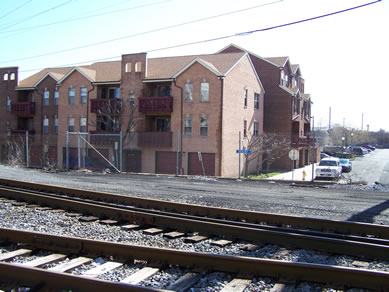Harrisburg on the eve
of Civil War
Study Areas
The Violent Decade
Judy's Town Neighborhood
Third and Mulberry Streets, Harrisburg, PA
When John Harris the settler died, he freed his slave Hercules and stipulated in his will that the former slave should “be allowed to live on a part of the tract purchased of James Allcorn left to my son William.” It is important to note that the former slave held no rights to the land beyond occupancy and, presumably, the right to farm enough land to sustain him and his family. But even without ownership, Harris’ provision gave this black family a place to live that could be called home.
Over the years, the land on which Hercules and his family and descendants lived developed into a small, close-knit African American neighborhood known informally as Judy’s Town. It obtained its name in the early 1800s for Judy Richards, the African American matriarch who looked after residents and settled local disputes. Her daughter, Mary Ann, married Edward Bennett, the ambitious black entrepreneur whose chimney sweeping business provided work for many young sweeps.
The town’s first African American church, Wesley Union, was built
at the corner of Third and Mulberry streets, to minister to Harrisburg’s
black residents. The Judy’s Town location was a natural fit, as
it was then the center of Harrisburg’s black community.
No traces of the old neighborhood remain. Expansion of the transportation corridor in the mid-1800s, together with city expansion and development wiped out all existing buildings. The photograph above was taken from Third and Cherry Streets, looking across the railroad tracks to what had been the old Meadow Lane. Modern townhouses and apartments now occupy most of the original area.
Further Research
Previous Next
![]()
![]()
All photographs and text on this page copyright © 2010 George F. Nagle and Afrolumens Project.
Notes and Links
Of Interest Nearby



